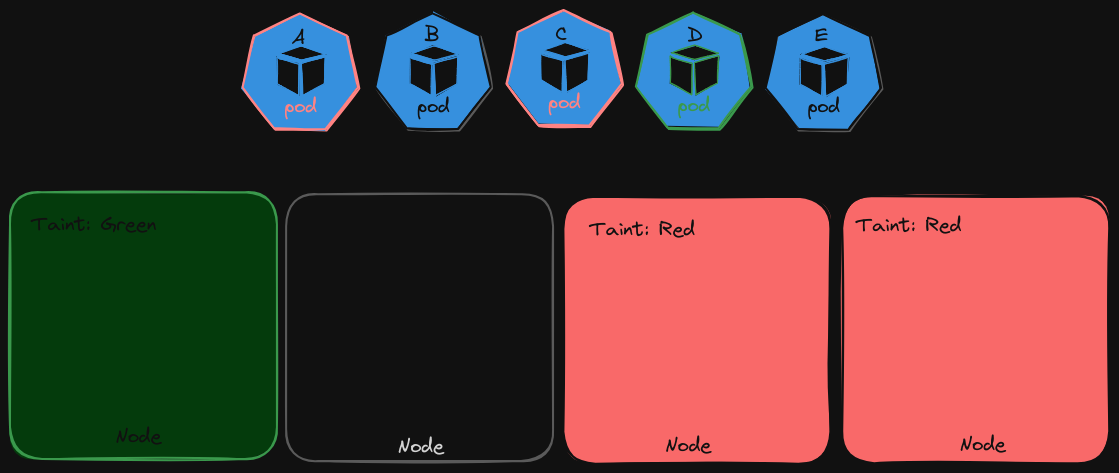Taints and Tolerations are mechanisms used to control which nodes can or cannot run specific [[1.9 - Pods]]. This is useful when you want to influence the scheduling of pods based on certain conditions or constraints.

In this situation, pods will be scheduled based on a variety of factors, but nodes with particular taints will only accept pods with the respective tolerations.
- For example, pods A and C can be placed on nodes 2, 3 and 4. Pod D can be placed on nodes 1 and 2, and pods B and E can be placed on node 2. Pods with tolerations can be placed on nodes with no taints.
To taint a node, use the command $ kubectl taint nodes node-name key=value:taint-effect, where taint-effect can be one of the following: NoSchedule, PreferNoSchedule, or NoExecute.
- NoSchedule completely disallows new pods from being scheduled to the node.
- PreferNoSchedule indicates a preference for not scheduling new pods to the node, but does not completely prevent it.
- NoExecute evicts existing pods from the node if they do not tolerate the taint.
To specify a toleration in a pod definition file, use the following format:
apiVersion: v1
kind: Pod
metadata:
name: myapp-pod
labels:
app: myapp
type: front-end
spec:
containers:
- name: nginx-container
image: nginx
tolerations: # all tolerations fields are in double quotes
- key: "app"
operator: "Equal"
value: "green"
effect: "NoSchedule"
Note that tolerations and taints prevent pods from being placed on nodes, they do not guarantee that they will be placed on specific nodes.
As a side note, the master node has a taint that prevents any pods from being deployed on it.